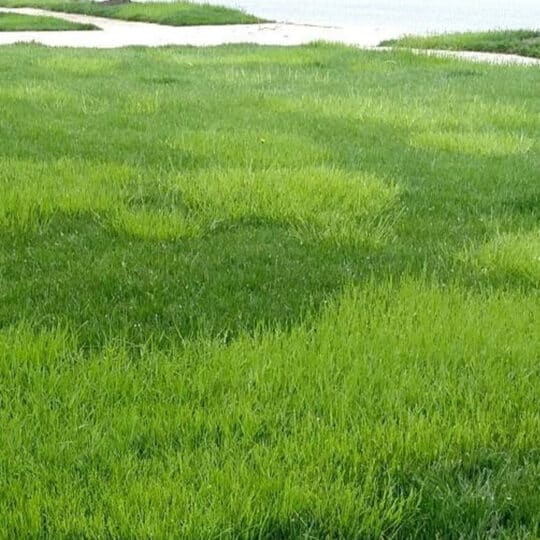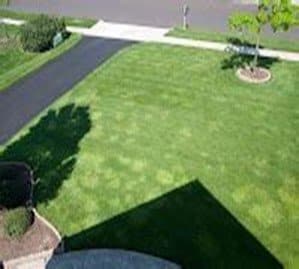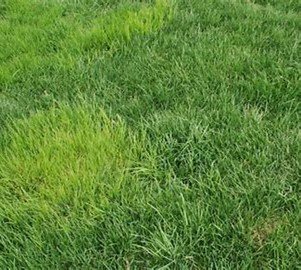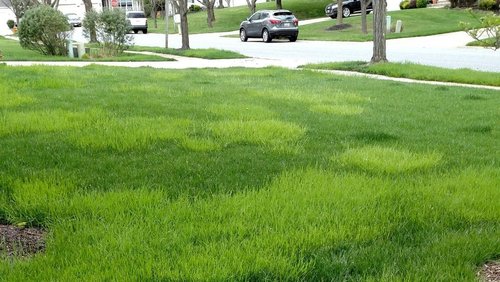Poa Trivialis (Rough Bluegrass)

It is early spring, and our phones start to ring along with our email inboxes begin to fill up with questions, why do I have crabgrass or Nutsedge? Considering the time of year, the answer is straight forward, it is not possible. The reason, soils did not hit 55 degrees for three days in a row which is a requirement for germination of crabgrass and Nutsedge.
What it commonly turns out to be is Rough Bluegrass (aka, RBG, Poa Trivialis, Poa Triv., Roughstalk Bluegrass). Crabgrass, Nutsedge, and RBG have similar characteristics and found in cool season grasses (the ones we grow) in the Mid -Atlantic region. Also, they will demonstrate a light lime hue and will not darken with infusions of Nitrogen or Iron. The main difference is RBG will be present in spring vs. crabgrass and Nutsedge will typically emerging early May and is not highly visible until mid to late June.

(Purdue University, Turfgrass Science)

(Pennsylvania State University. Turfgrass Science)

(Purdue University, Turfgrass Science)
Since RBG is in the “bluegrass” family, RBG does have a boat shaped tip along with two parallel lines veins down the middle, just as our desirable friend, Kentucky Bluegrass. The main difference between the two is Kentucky Bluegrass maintains a dark and desirable hue in our turfgrass ecosystems. Another way to tell if you have RBG is the light bronze color it will exhibit in the summer and possible sudden collapse after a heavy rain fall and / or hot environmental conditions. Also, you will see a “stringy” look after it is mowed, even with sharp mower blades.
Question is, why do we have RBG in our yards if it is not a desirable grass? The answer, RBG was introduced into grass mixes in the mid 1980’s as a solution to shady and moist areas. Not anymore. RBG is classified as a noxious weed and will not be present in certified seed mixes (the only type we use at Green Image Lawn Care, Blue Tagged Certified Seed).
Can we get rid of it? Well, we wish we could have a better answer for you. Currently, there is no registered selective control products for a cool season residential turf grass setting. If you have a high population, you will need to resort to a non-selective herbicide that will kill all grass present. It should be noted, a follow up application will need to be made around three weeks after the first to get rid of any new growth that was hanging out in your soils. The best solution is to catch it early! Lower populations will allow you to “paint” those areas with a non-selective herbicide and remove the populations on a as needed basis without causing a total redo. It should be noted, selected areas should always be seeded with a more desirable turf grass type to compete within your lawn to fill in any voids.

Photo: Miri Talabac, University of Maryland Extension